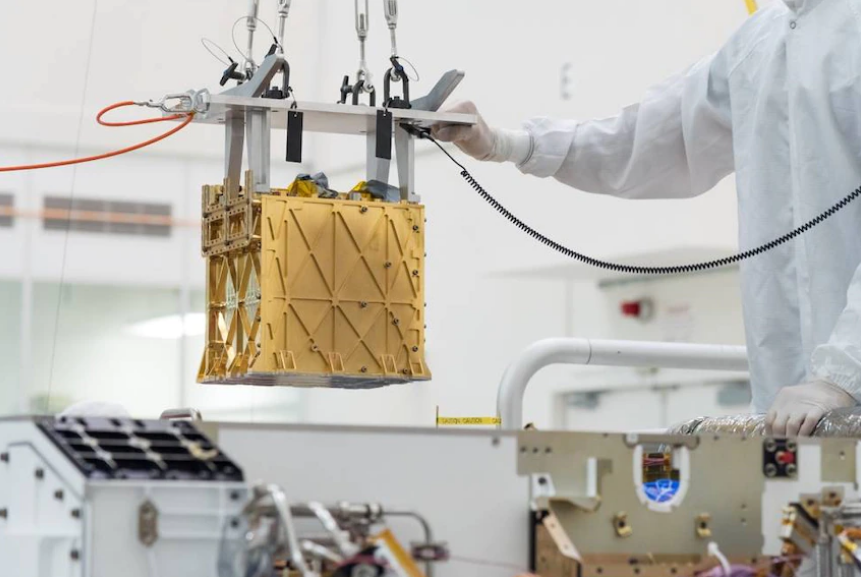
NASA research has made a major advancement toward human habitation on Mars by successfully producing breathing oxygen using materials discovered on the Red Planet.
The Mars Oxygen In Situ Resource Utilization Experiment, or MOXIE, a NASA instrument, has achieved a first for the experiment.
Since it landed on Mars in February 2021, the lunchbox-sized device has created oxygen from carbon dioxide in the Martian atmosphere seven times.
The first instance of “in-situ utilization” was demonstrated by MOXIE’s oxygen synthesis on Mars. This is the process of gathering and utilizing materials from a planet to create supplies that would otherwise require shipping from Earth.
Jeffery Hoffman, a professor of aeronautics and astronautics at the Massachusetts Institute of Technology (MIT) and the MOXIE project’s chief scientist, reported that this was the first time MOXIE has used resources from the planet itself.
He said, “This is the first demonstration of actually using resources on the surface of another planetary body, and transforming them chemically into something that would be useful for a human mission.”
According to results reported in a new publication in the journal Science Advances, MOXIE achieved its objective of creating 6 grams of oxygen per hour in each of its seven runs, which is comparable to the pace of a small tree on Earth.
Moxie’s development at MIT started in 2014, and it traveled to Mars in 2020 aboard NASA’s Perseverance rover and touched down at the crater of Jezero in February 2021.
Researchers Propose a Scaled-up MOXIE Device to be deployed on Mars
Before people visit the planet, researchers propose that a scaled-up MOXIE device may be deployed there to continually create oxygen at the pace of several hundred trees.
Consider the MOXIE process comparable to how a fuel cell produces oxygen and hydrogen from water. Electrolysis separates carbon dioxide into oxygen and carbon monoxide once the Martian air has been filtered and sucked into the device.
The single oxygen atoms are then combined and cleaned to create O2 or breathable oxygen. Moxie returns the oxygen and carbon monoxide to the Martian atmosphere.
MOXIE has so far demonstrated its ability to produce oxygen practically year-round on Mars.
At MIT’s Haystack Observatory, Michael Hecht, the MOXIE mission’s main investigator, said: “The only thing we have not demonstrated is running at dawn or dusk when the temperature is changing substantially.”
Hecht said, “We do have an ace up the sleeve that will let us do that, and once we test that in the lab, we can reach that last milestone to show we can run any time.”
According to researchers, a more powerful version of MOXIE would pump that oxygen into a storage tank for later use on a future Mars expedition. This entails giving astronauts access to breathable oxygen or liquid oxygen for the production of rocket fuel.
Engineers intend to boost MOXIE’s output as it continues to produce oxygen on Mars, especially in the Martian spring when atmospheric density and carbon dioxide levels are high.
Mr. Hoffman said that in order to “support a human mission to Mars, we have to bring a lot of stuff from Earth, like computers, spacesuits, and habitats.”
See all the latest news from Greece and the world at Greekreporter.com. Contact our newsroom to report an update or send your story, photos and videos. Follow GR on Google News and subscribe here to our daily email!



